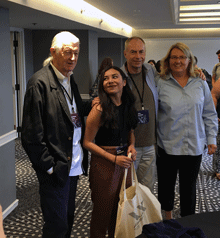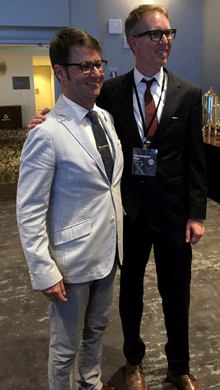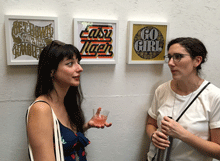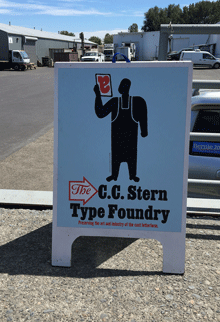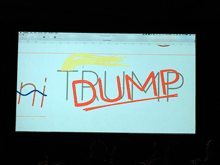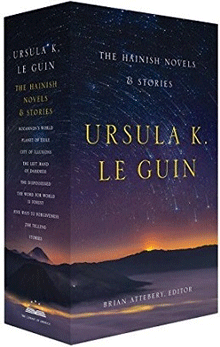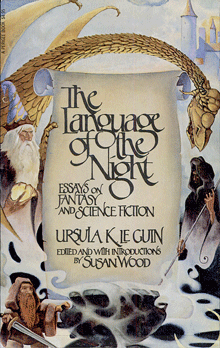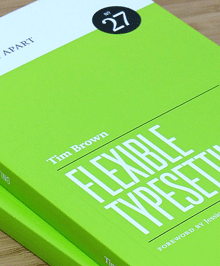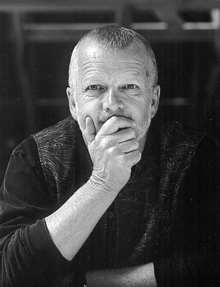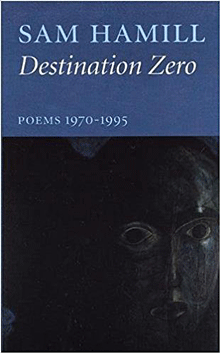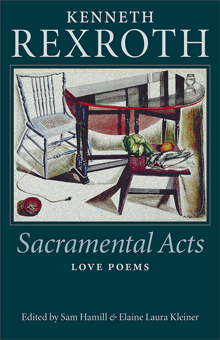At the beginning of August, I was in Portland, Oregon, for the 20th anniversary of TypeCon (which was also TypeCon XX, thanks to their having skipped 1999, the second year). As one of the few who attended the very first TypeCon, held in a crummy motel next to a business park in Westborough, Mass., I appreciated how the conference has grown and changed. It was founded by Bob Colby as a low-cost convention for type enthusiasts and appreciators; as it happened, many of the attendees of the first TypeCon turned out to be independent type designers, and that put a stamp on it for years to come.
As with any gathering of its kind, TypeCon for me is first and foremost an opportunity to see old friends and make new ones, and I did plenty of both in Portland. There were intriguing talks and presentations, and I managed to get to most of them on the first day, though more spottily after that. But the highlights for me tended to be things like sitting around one afternoon in the hotel lobby talking with Rod McDonald about Ed Cleary and old times in the type world. A nice mix of friends and new acquaintances was the TypeThursday lunch organized by Thomas Jockin, where those of us from various TT chapters got to meet up and chat for an hour or so.
But there were also highlights among the official events. I particularly enjoyed Gemma O’Brien’s very hands-on keynote talk, and meeting her briefly later. Frida Medrano, who was given the SOTA Catalyst Award, impressed me with her cutting-edge knowledge of variable fonts. Rainer Erich Scheichelbauer did a live-action tapdance of OpenType Variations that was witty, entertaining, and eye-opening. Nina Stössinger delivered an excellent keynote talk (no surprise there!). The Sunday Type Crit, as usual, was a relaxed yet focused insight into the type designs of various volunteer designers, and into the minds of the very experienced critiquers. (I wouldn’t call them “judges” or a “jury,” as it wasn’t in any sense a competition; just helpful advice and suggestions.)
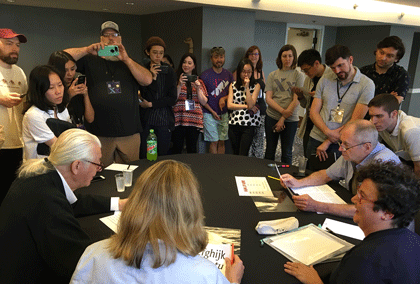
I had been skeptical about Matthew Wyne’s “Letters and Liquor: a Typographic History of Cocktails,” but he pulled off an entertaining slideshow, and afterward several of us cheerfully accompanied him to a local bar that served “barrel-aged Negronis,” a variation on my favorite cocktail that was new to me.
With Glenn Fleishman, I journeyed up to the northern edge of Portland to revisit the C.C. Stern Type Foundry, or as it’s calling itself now, the Museum of Metal Typography. I was welcomed by printers and typesetters I hadn’t seen since my previous visit, during the previous Portland TypeCon, and enjoyed the smells and sounds of metal type-founding (and the heat of a busy machine shop).
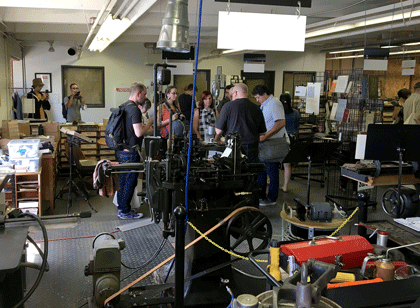
For North Americans (and visitors from overseas), TypeCon provides an annual place to get together and catch up with the typographic community. I must admit that I’m enjoying the current pattern, where TypeCon seems to return to the Pacific Northwest every couple of years. As has become habitual, though, the SOTA board had not decided on next year’s location yet when this year’s TypeCon ended. We’ll just have to wait and see.
[Photos: (top, above) the Type Crit in action; a scene at the C.C. Stern Type Foundry; (left, top to bottom) (L–R) Matthew Carter, Frida Medrano, John Downer, Jill Pichotta after the Type Crit; (L–R) Jean François Porchez & Christopher Slye, looking spiffy; (L–R) Laura Serra & Erin McLaughlin at the closing party; the C.C. Stern Type Foundry sign; Rainer Erich Scheichelbauer’s live variable-fonts demonstration.]

